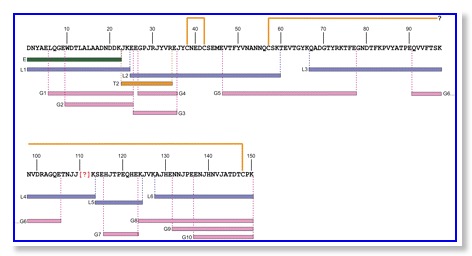Even the smallest of hamsters have lipocalins in their urine.

Turton MJ, Robertson DH, Smith JR, Hurst JL, Beynon RJ. Roborovskin, a Lipocalin in the Urine of the Roborovski Hamster, Phodopus roborovskii. Chem Senses. 2010 Jun 24. [PUBMED][PDF]
Many rodents are now known to exhibit an obligate proteinuria that delivers urine-mediated chemosignals. In this paper, we explore the urinary proteins of the Roborovski hamster (Phodopus roborovskii). Sodium dodecyl sulfate-polyacrylamide gel electrophoresis analysis of urine from individual male and female Roborovski hamsters revealed 2 proteins, with approximate masses of 6 and 17 kDa, the expression pattern of which showed little variation between individuals or between sexes.
Peptide mass fingerprints obtained from these 2 proteins revealed a number of features: 1) the proteins of a given mass were the same in all individuals regardless of sex, 2) the 6 kDa protein was not a fragment of the 21 kDa protein, and 3) neither protein was a fragment of a larger, conserved protein such as serum albumin. Electrospray mass spectrometry of purified protein preparations established the mass of the larger protein as invariant, at 17144 +/- 2 Da in all samples. This protein has been termed roborovskin. The primary structure of roborovskin was determined by tandem mass spectrometry of peptides derived from independent and overlapping digestion with 3 proteases, supported by Edman degradation of the protein N-terminus.
Roborovskin shared significant homology with olfactory-binding proteins from Myodes glareolus (bank vole) and with aphrodisin and submandibular protein from the golden hamster Mesocricetus auratus, all of which belong to the lipocalin superfamily. Lower levels of homology were also indicated between a variety of other lipocalins including the major urinary proteins from house mice and Norway rats. A model of the tertiary structure of roborovskin was constructed from the primary sequence by homology modeling. This model structure resembled other 8-stranded beta barrel lipocalins. Thus, the Roborovski hamster may demonstrate another variant of urinary lipocalin expression, as for the animals studied here, there appears to be no polymorphism in expression either between sexes or individuals.